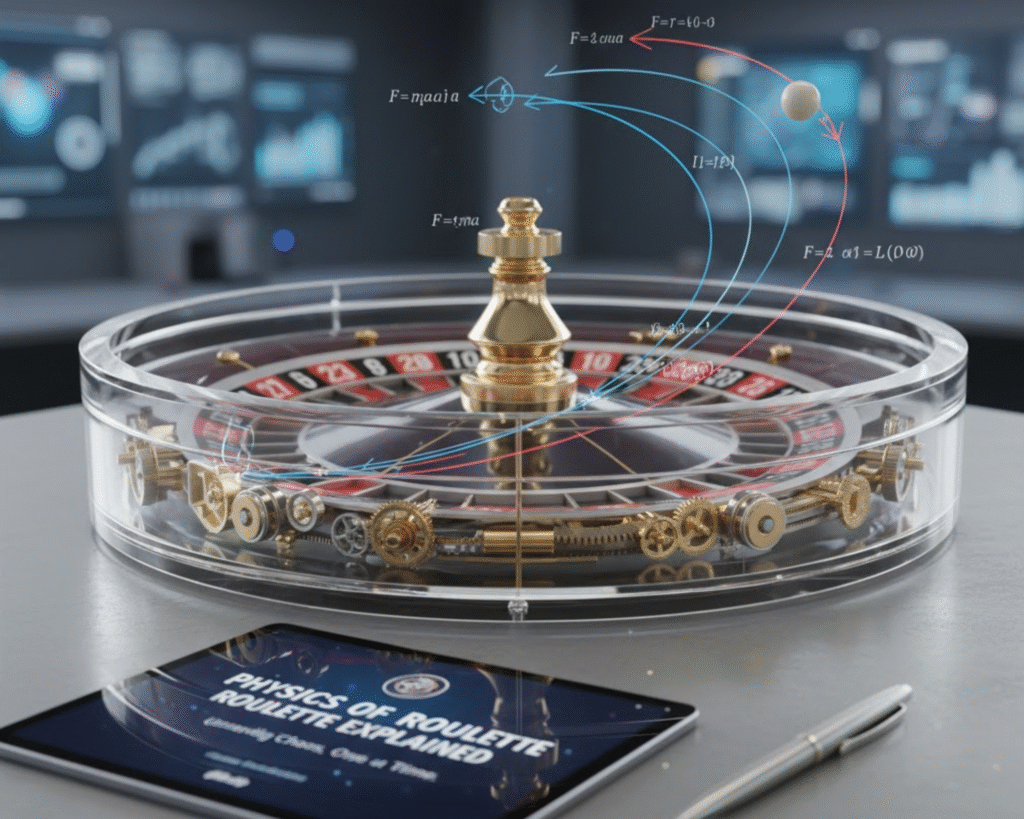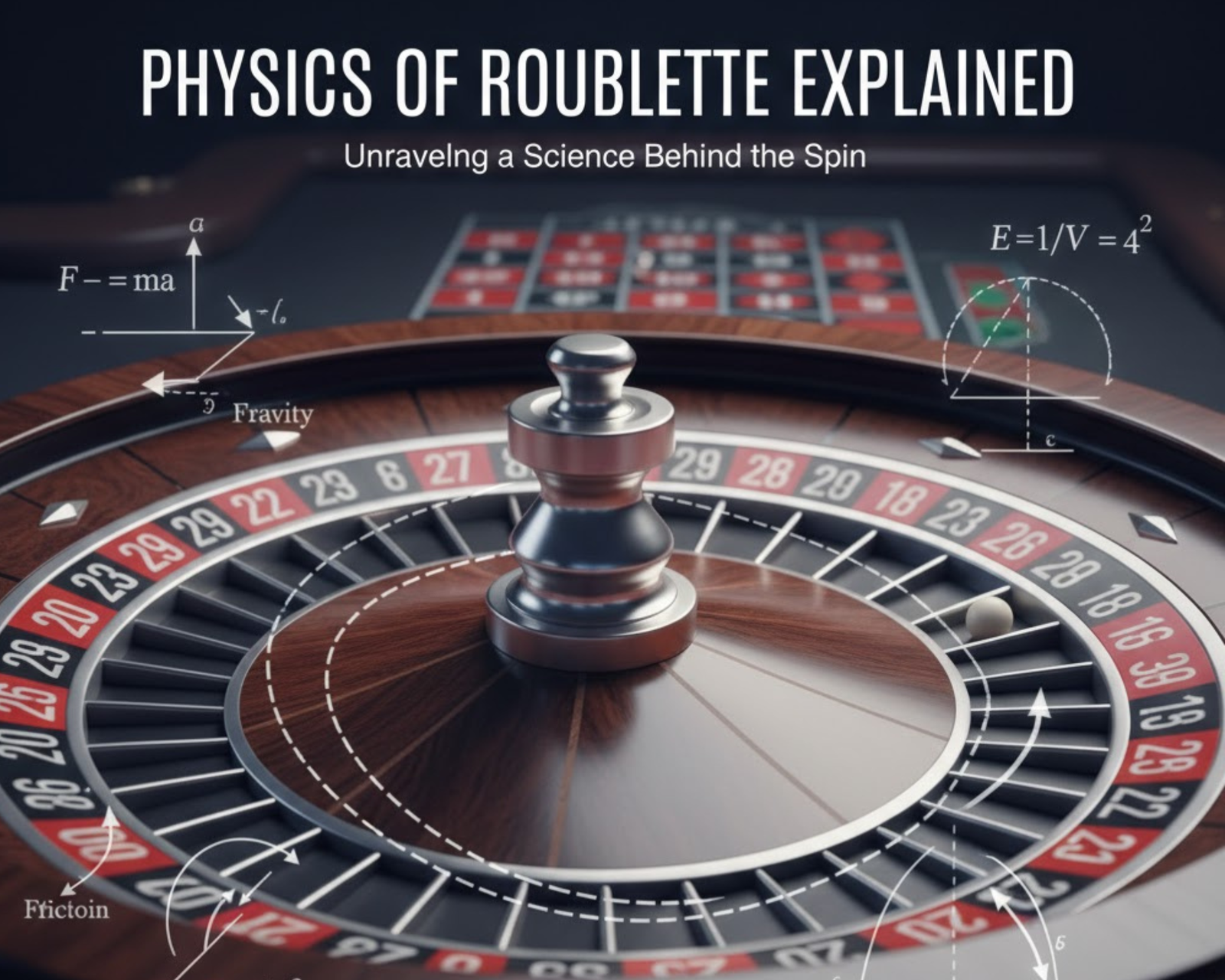If you’ve ever watched a Physics of Roulette Explained wheel spin and wondered whether physics—yes, the same science behind falling apples and orbiting planets—could help you predict where the ball will land, you’re not alone. Roulette looks like a game of pure chance, but beneath the glamour, it hides a fascinating world of motion, momentum, friction, and probability.
Let’s take a deep dive into what’s really happening inside the wheel and whether understanding physics can give you even the slightest edge.
What Makes Roulette So Fascinating?
Physics of Roulette Explained is simple at first glance: a spinning wheel, a small ivory ball, and numbered pockets. But behind that simplicity lies a perfect dance of speed, angles, and timing. That’s why physicists, mathematicians, and gamblers have studied the game for decades.
Think of it as a tiny universe where every spin is a mini experiment in motion.
The Two Main Forces at Work in Roulette
Roulette is controlled by two main components:
The Spinning Wheel
The Rolling Ball
Both move independently, which introduces randomness—but not complete chaos. Understanding them separately makes the whole picture clearer.
How the Roulette Wheel Spins: Speed, Balance & Momentum
The dealer spins the wheel one way and the ball the opposite way. At this point, the wheel behaves like a smooth, stable disk governed by inertia.
But here’s where physics enters the scene.
Constant Speed Doesn’t Exist
Even if the dealer tries to keep consistency, slight variations always occur. No human can produce the exact same force on every spin.
Wheel Imperfections Matter
A perfectly balanced wheel would be unpredictable.
A slightly tilted wheel? That changes everything.
Even a tiny tilt—like 1/20th of a degree—can shift how gravity affects the ball’s fall. This is why casinos regularly check and maintain their wheels.

The Ball: The Real Star of the Show
Once the ball is launched, it rolls along the rim above the numbered pockets. But it can’t stay there forever.
What forces act on the ball?
Centripetal force keeps it moving along the circular track.
Gravity pulls it downward.
Friction between the ball and the rim slows it down.
As the ball loses speed, it eventually drops from the rim and bounces into the wheel’s numbered pockets.
The Exact Moment the Ball Drops—The Game-Changing Point
This is the moment that excites both gamblers and physicists. As the ball slows, it no longer has enough speed to fight gravity and centripetal force.
Once the ball drops, its path becomes messy—tiny bumps, deflectors, and jumps add chaos.
This is why predicting the exact winning pocket is nearly impossible.
But predicting the general area?
Some argue it’s possible, and that’s where physics meets strategy.
Deflectors: The Built-In Chaos Makers
Look closely at a roulette wheel and you’ll notice little diamond-shaped bumps around the rim. These are deflectors, designed to send the ball bouncing unpredictably.
Casinos didn’t add these for decoration.
They added them to protect the house.
Even if someone studies the motion with physics, these deflectors introduce enough randomness to break most predictions.
Can Physics Really Predict Roulette?
Let’s be honest—Hollywood loves showing characters who “read the wheel” and walk out rich. But how realistic is that?
Yes, physics can predict roulette… theoretically.
Back in the 1970s and 1980s, a few groups used:
hidden computers,
timing devices,
and advanced calculations
…to estimate where the ball would land. And guess what? Some actually won—until casinos caught on and banned them.
But in a casino today?
Almost impossible.
Casinos have:
tighter wheel regulations
better maintenance
random-spin rules
higher-quality deflectors
stricter surveillance
The result? Physics gives you insight, but not a reliable winning formula.
The Biggest Myth: Dealers Can Control the Outcome
Many players believe dealers can “aim” the ball. But physics disagrees.
Why not?
Because:
the wheel speed changes every spin
ball release varies
friction changes
unpredictable bounces occur
gravity and momentum are uncontrollable
Dealers aren’t magicians—they’re just spinning a wheel.
Why Every Spin Is Unique
Even tiny factors change the outcome, such as:
microscopic dust
humidity
ball material
wheel lubrication
slight variations in force
It’s like rolling a marble down a slightly different slope each time.
Small changes produce big differences.
The Science of Probability: Where Physics Meets Math
Physics helps you understand how the ball moves.
Probability helps you understand how often outcomes happen.
In an ideal wheel:
Every number has an equal chance of landing.
The house edge stays around 2.7% for European wheels and 5.26% for American wheels.
No matter how much you study physics, math keeps the house ahead.
Can You Use Physics to Improve Your Game?
Not to predict the exact pocket—but understanding Physics of Roulette Explained can help you avoid bad bets.
Better Choices:
European wheel over American
Avoid “sucker bets” like 5-number bets
Focus on even-money bets if you prefer consistency
Understanding the science helps you play smarter, but not necessarily beat the system.
Why Roulette Physics Is Still Worth Understanding
Even if you can’t hack the game, knowing the physics changes the way you see roulette. Instead of thinking of it as random magic, Physics of Roulette Explained you realize it’s a symphony of motion and forces interacting.
It’s a beautiful blend of:
science
luck
probability
and pure excitement
And that’s part of the charm.
READ MORE: How to Choose the Best Casino Site for Real Money in 2025
Conclusion
Physics of Roulette Explained might look like a simple casino game, but every spin hides a world of physics in motion. From the wheel’s rotation to the ball’s speed, from deflectors to the moment the ball falls, everything follows the laws of nature—just in unpredictable ways.
While physics can explain how roulette works, it can’t consistently predict which number will win. And that’s exactly why the game remains thrilling, mysterious, and endlessly captivating.
Whether you’re a casual player, a curious mind, or a casino enthusiast, knowing the science behind the wheel adds a whole new layer of appreciation.



